| Lifestyle |
| Traditional tea gatherings reflect local culture and strengthen social bonds | |
|
|
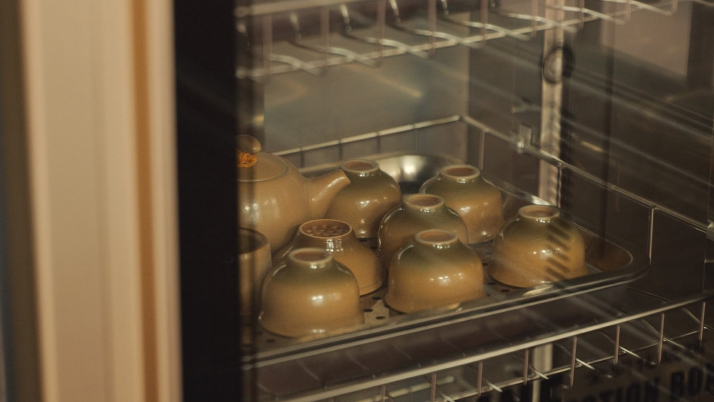 Tea sets offered in parks in Xiamen, Fujian Province, are sterilized after each use, on September 7 (YIN KANG)
More than its picturesque landscapes, rich history and vibrant cultural scene, Xiamen, a coastal city in southeast China, is also renowned for its deep-rooted tea culture. As one of the key hubs in the Minnan (southern Fujian) region, Xiamen has long been a center for tea growing, processing, trade and consumption. A standout tradition in Xiamen is chazhuozi, which, literally meaning "tea table," refers to a gathering centered around tea drinking. Tea culture in Xiamen and the broader Minnan region is an integral part of daily life. There, tea is more than just a beverage—it's a symbol of hospitality, friendship and respect, offered in family gatherings, business meetings, or casual chats among friends. 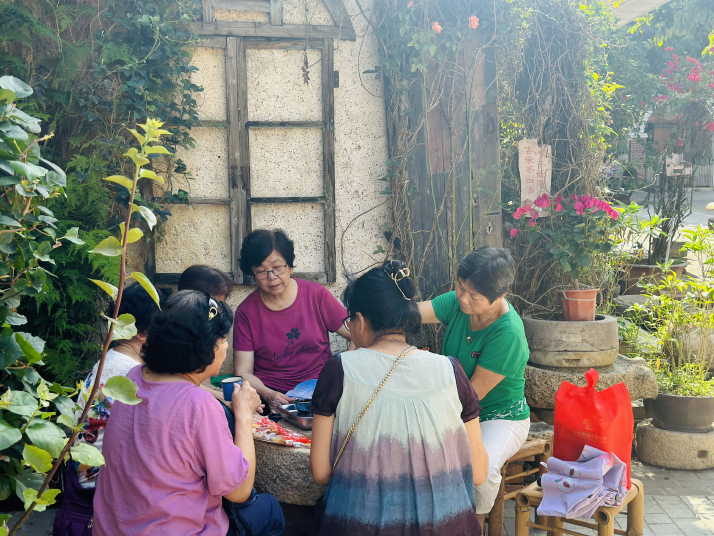 Chazhuozi, a gathering along the streets for tea drinking, is a common sight in Xiamen (COURTESY PHOTO)
Chazhuozi draws people to gather around a table to share tea and stories, creating warm, welcoming occasions for both locals and visitors to enjoy the art of tea brewing in a relaxed, social setting. The variety of teas reflects the diversity of the people who enjoy them. "In the past, the tea setup was simple," said Yan Jingqian, General Manager of Xiamen Wilderness Tea Industrial and Trade Co. Ltd. "It was usually just a tea tray, or sometimes even a bowl with a teapot inside, along with a cup for drinking." Tea is served in multiple infusions, with the same leaves steeped multiple times, each revealing a slightly different flavor and allowing drinkers to appreciate the full range of a particular tea's nuances. The host, or tea master, will pour the tea for guests, offering them the chance to appreciate the aroma. 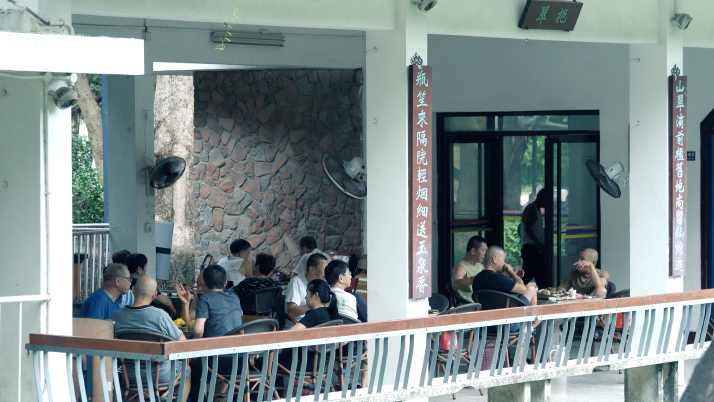 A chazhuozi spot at Zhongshan Park in Xiamen on September 7 (YIN KANG)
"The beauty of chazhuozi is its simplicity and relaxed vibe," Yan told Beijing Review. "It's casual, easygoing and social." These tea tables can be found in many places: along the streets, in tea houses and in parks. Some parks in Xiamen even offer free hot water, tea sets and tables for visitors to use. Tea enthusiasts clean and return the sets to designated areas, where they are sterilized for reuse. Early risers, especially seniors, bring their own tea leaves and snacks to tea tables to start the day. "The only thing that can interrupt a chazhuozi gathering is a typhoon"—this local saying illustrates that nothing stops Xiamen residents from their daily tea tradition. A retiree from Xiamen University told Beijing Review that many Xiamen locals picked up their tea-drinking habits from their grandparents, carrying with them cherished family and childhood memories. Seniors' tea gatherings usually wind down around 9 a.m., making room for others to take their place. Afterward, they head home and some might casually wander over to the community canteen for a meal. This is a snapshot of life in Xiamen—leisurely and unhurried. 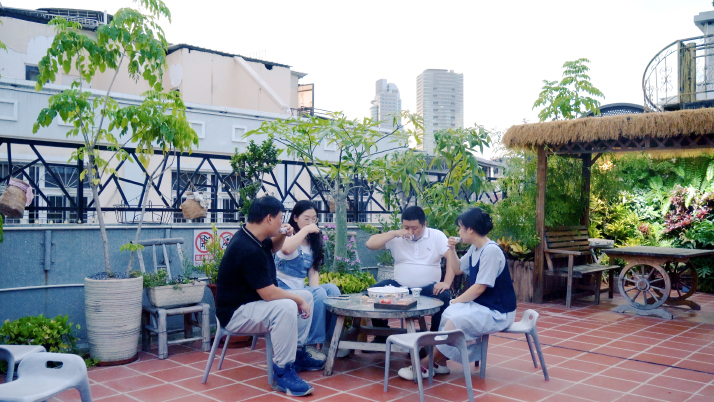 Yan Jingqian (second right), General Manager of Xiamen Wilderness Tea Industrial and Trade Co. Ltd., enjoys tea with friends at a rooftop garden in Xiamen on September 7 (YIN KANG)
By 2 p.m., after a midday nap, tea lovers are back at the tea tables in the old town, sipping tea alone and waiting for friends to join them. To them, these moments of quiet reflection have become an integral part of daily life. Storytelling is another key element of chazhuozi, where locals share old stories, anecdotes and historical tales, adding a layer of depth and enjoyment to the tea gathering. These stories keep the tradition alive, offering a rich mix of history and culture alongside the tea. 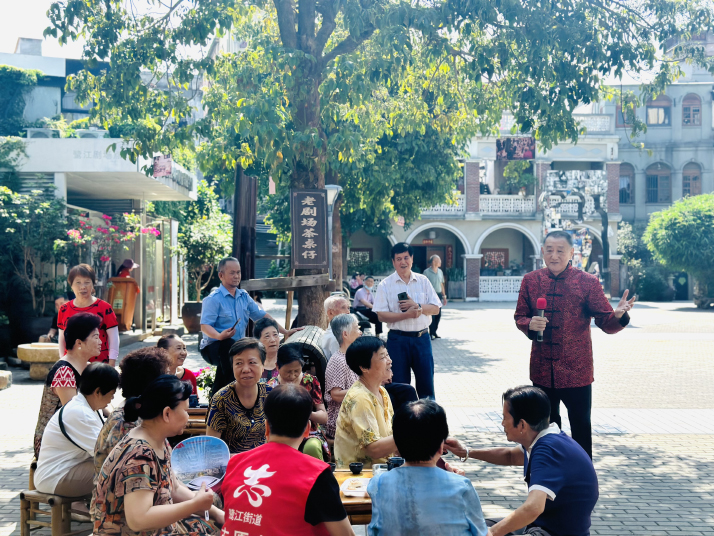 Storytelling is an important part of chazhuozi, making tea gatherings even more enjoyable (COURTESY PHOTO)
Many young people in Xiamen, inspired by this traditional tea culture, have embraced the practice of tea drinking as a way to reconnect with their roots. At the same time, younger generations are innovating on the classic chazhuozi by experimenting with richer tea varieties, modern brewing techniques and contemporary settings. This fusion of tradition and innovation helps ensure that tea culture remains relevant in today's fast-paced world. "What I value most about chazhuozi is that it's more than just a place to sip tea. It's about connecting with others. Whether you know the person or not, you can sit down, take a break if you are tired, and have a cup of tea if you are thirsty," Yan said. He believes this tradition will continue to grow, helping people relax and strengthening bonds between them. (Print edition title: The Aroma That Unites) Copyedited by G.P. Wilson Comments to liqing@cicgamericas.com |
|
||||||||||||||||||||||||||||||
|